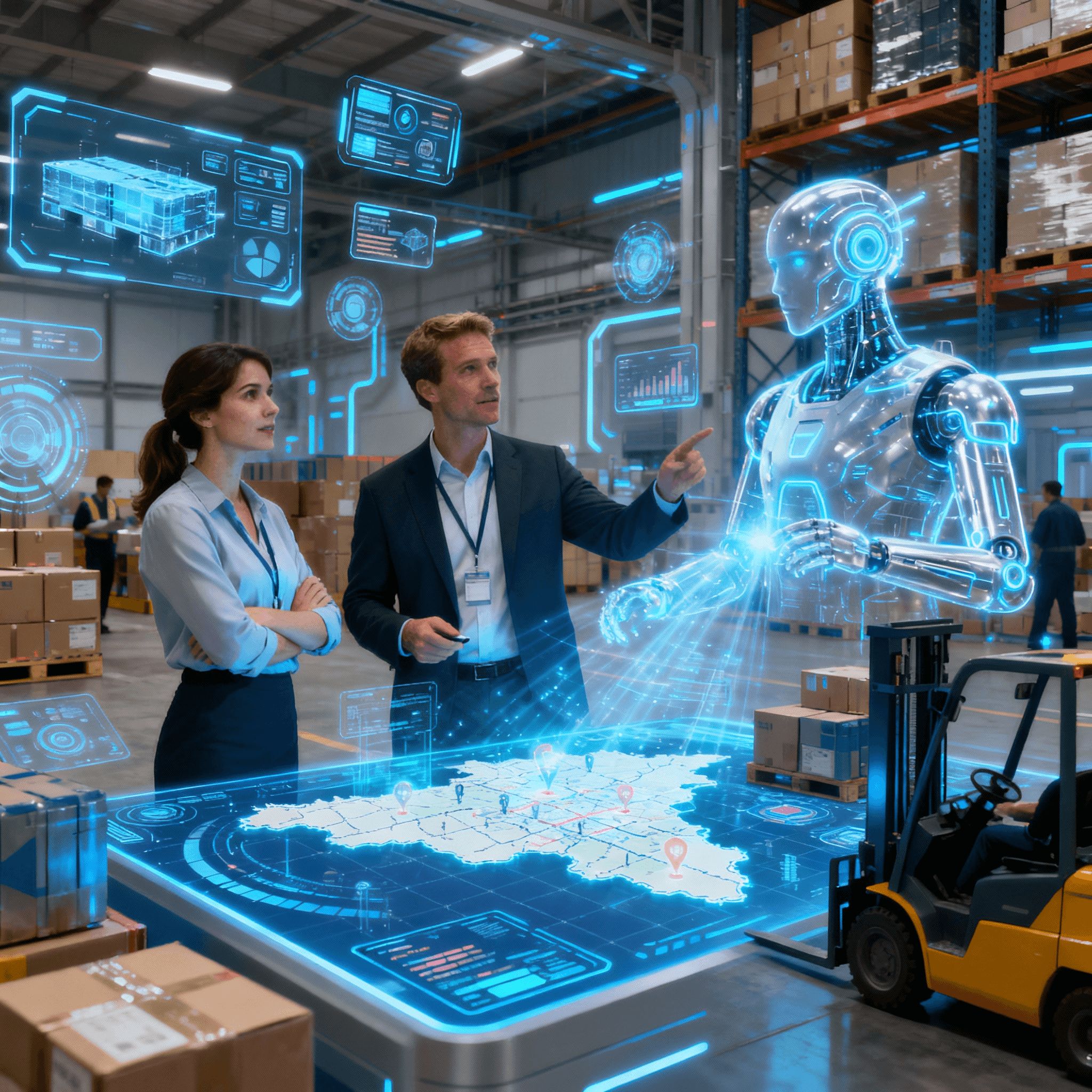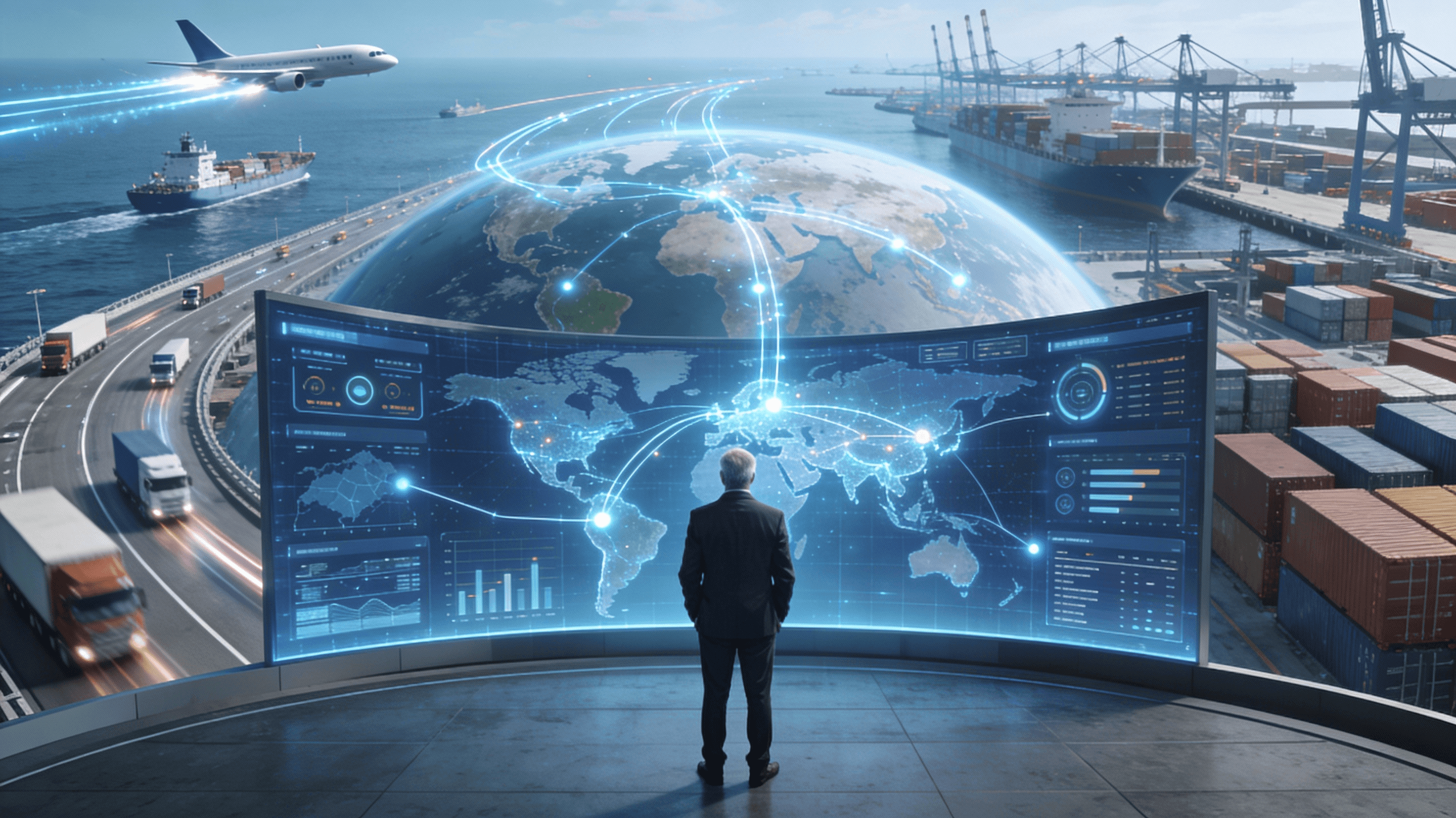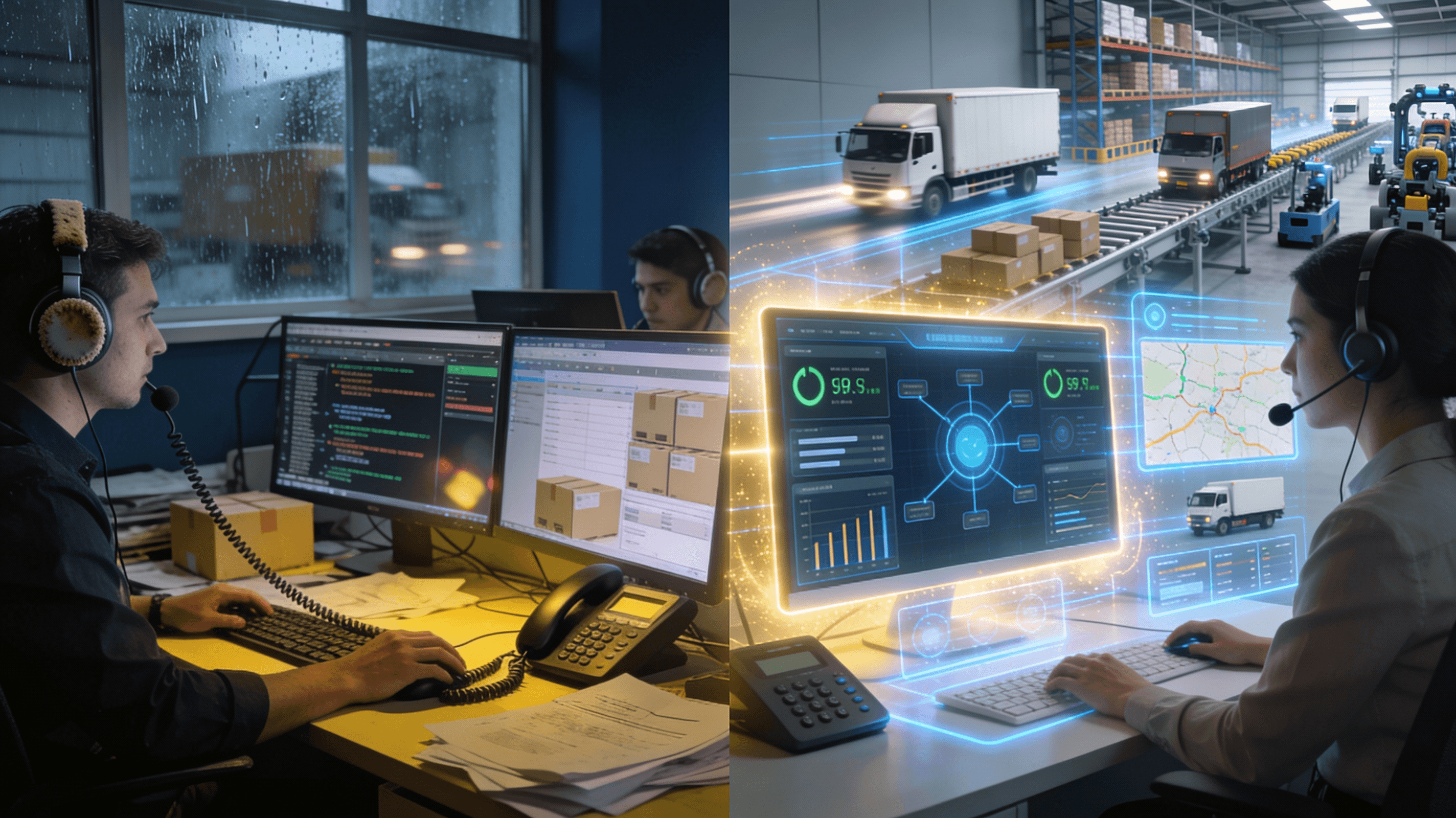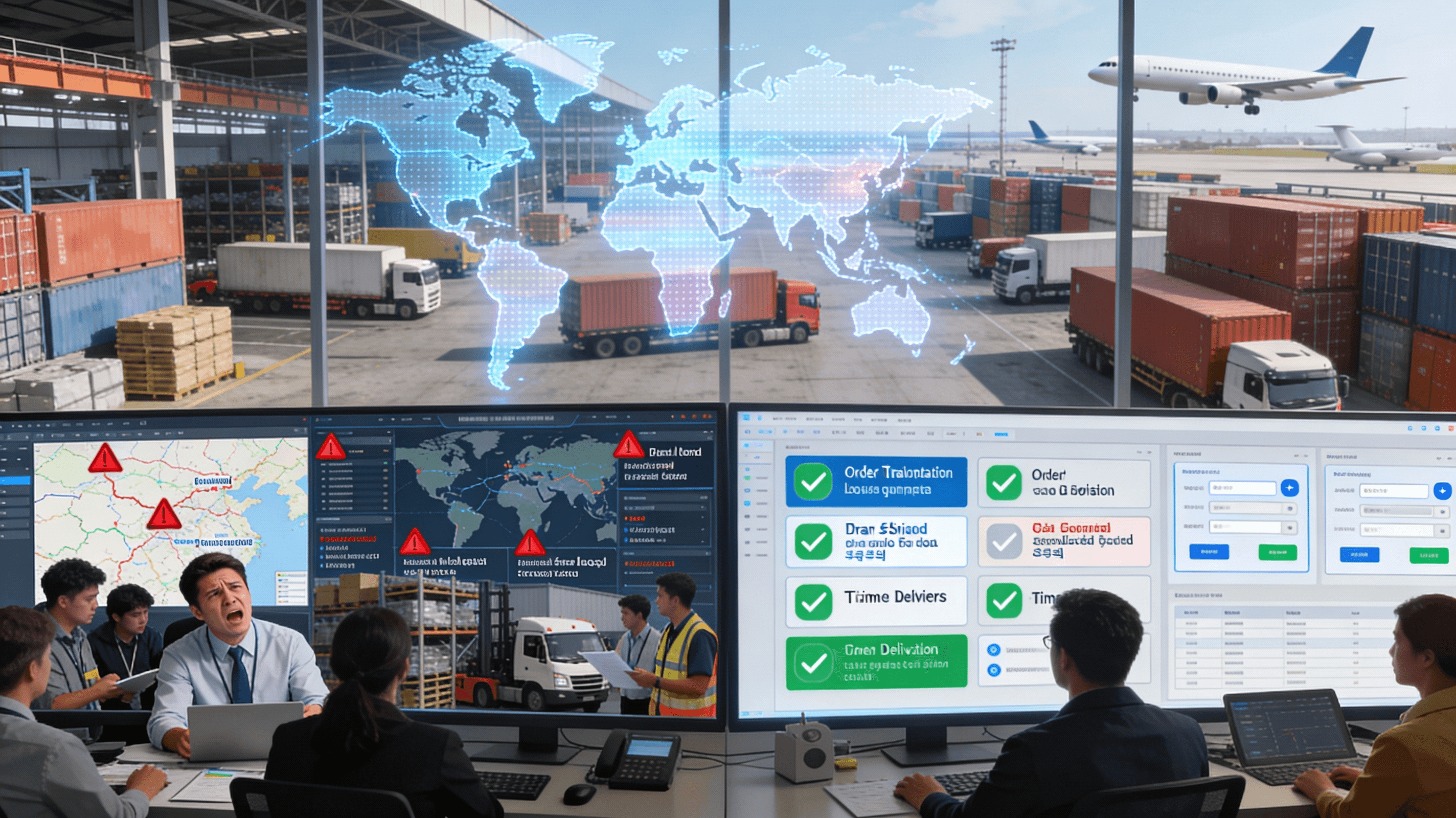Exciting Future Trends for AI in the Logistics Industry
Tuesday, 7 Oct 2025
|
What Are the Most Exciting Future Trends for AI in the Logistics Industry?
The logistics industry is undergoing a seismic transformation, largely driven by Artificial Intelligence (AI). As supply chains become more complex, the need for smarter, more efficient systems grows. AI is stepping in to revolutionize logistics, offering innovative solutions that drive cost savings, improve efficiency, and enhance customer satisfaction. As a logistics executive, staying on top of these trends is crucial for maintaining a competitive edge.
In this article, we'll explore the most exciting future trends for AI in the logistics industry, highlighting actionable insights that executives can leverage to future-proof their operations.
Trend 1: Autonomous Vehicles and Drones
Autonomous vehicles and drones are perhaps the most talked-about trend in the logistics space. From self-driving trucks to delivery drones, AI is transforming the way goods are transported. Autonomous vehicles are already proving their worth, improving delivery speed and reducing labor costs. The future promises even more innovation as AI algorithms become more refined, enabling fully autonomous fleets.
Implications for Logistics:
- Reduced Operational Costs: Autonomous vehicles and drones reduce the need for human drivers, leading to lower labor costs and fewer accidents.
- Faster Delivery Times: Autonomous vehicles can operate 24/7 without the need for rest, accelerating delivery times.
- Optimized Routes: AI systems can dynamically reroute vehicles in real-time, ensuring that goods arrive at their destination as quickly and efficiently as possible.
Real-World Example:
Kodiak Robotics, a leader in autonomous trucking, is testing self-driving trucks for long-haul freight. This technology promises to significantly reduce transportation costs and improve supply chain efficiency in the long term.
Trend 2: Predictive Analytics for Demand Forecasting
AI-powered predictive analytics is transforming demand forecasting in logistics. By analyzing vast amounts of historical data and using machine learning algorithms, AI can predict future demand with remarkable accuracy. This capability allows logistics companies to optimize inventory, reduce stockouts, and avoid overstocking, all of which directly contribute to cost savings.
Implications for Logistics:
- Improved Inventory Management: Accurate demand forecasts allow logistics companies to better manage inventory, reducing both overstocking and understocking.
- Cost Reduction: Predictive analytics helps optimize fleet operations and warehouse space, cutting down on unnecessary costs.
- Enhanced Customer Satisfaction: By ensuring products are always available when customers need them, companies can improve their service levels.
Real-World Example:
Amazon uses predictive analytics to forecast demand for millions of products, allowing them to streamline their operations and ensure products are available at the right time and place.
Trend 3: AI-Driven Warehouse Automation
Warehouse automation is rapidly advancing thanks to AI. From robotic picking systems to AI-powered inventory management, these technologies are transforming warehouse operations. AI algorithms can optimize the placement of goods within the warehouse, ensuring that high-demand items are easy to access and reducing the time needed for order fulfillment.
Implications for Logistics:
- Increased Efficiency: Automated systems increase the speed of picking and packing, allowing companies to fulfill orders more quickly.
- Cost Savings: Automation reduces the need for manual labor and minimizes human error, resulting in operational cost reductions.
- Scalability: AI-driven automation systems can scale quickly to accommodate increased volumes, making them ideal for businesses experiencing rapid growth.
Real-World Example:
Ocado, a British online supermarket, has implemented AI-driven robots in its warehouses to pick and pack groceries more efficiently. This approach has significantly reduced costs and improved order fulfillment speed.
Trend 4: AI-Enhanced Last-Mile Delivery
Last-mile delivery is one of the most critical and costly parts of the supply chain. AI is poised to revolutionize this segment by improving route planning, optimizing delivery schedules, and even reducing delivery times with the help of autonomous vehicles. AI can also enhance customer communication during the last-mile process, ensuring that customers receive real-time updates on their orders.
Implications for Logistics:
- Reduced Delivery Costs: AI-driven last-mile solutions help optimize routes, leading to reduced fuel consumption and labor costs.
- Increased Delivery Accuracy: AI can predict the best delivery windows based on historical data and real-time traffic conditions, ensuring on-time deliveries.
- Enhanced Customer Experience: Real-time delivery tracking and automated communication keep customers informed, improving satisfaction.
Real-World Example:
UPS has rolled out its "ORION" system, which uses AI to optimize delivery routes, saving millions of dollars annually and reducing its carbon footprint.
Trend 5: AI-Powered Supply Chain Visibility
AI is enhancing supply chain visibility by providing real-time data and insights into every stage of the supply chain. With AI, companies can track shipments, predict potential disruptions, and receive actionable insights to mitigate risks before they become major problems. This visibility is crucial for making informed decisions and ensuring the smooth flow of goods.
Implications for Logistics:
- Improved Risk Management: AI can detect potential disruptions, such as delays or inventory shortages, and suggest alternative actions.
- Greater Transparency: Real-time visibility into supply chain activities allows companies to make better decisions and improve communication with stakeholders.
- Proactive Issue Resolution: With AI’s predictive capabilities, logistics companies can address issues before they escalate, ensuring that the supply chain runs smoothly.
Real-World Example:
Maersk, the world’s largest container shipping company, uses AI to improve supply chain visibility and track shipments in real-time. This allows them to proactively manage risks and deliver goods on time.
Trend 6: AI in Supply Chain Sustainability
Sustainability is becoming an increasingly important focus for the logistics industry, and AI is playing a significant role in driving eco-friendly practices. From optimizing fuel consumption to reducing carbon emissions, AI can help logistics companies become more sustainable without sacrificing efficiency.
Implications for Logistics:
- Reduced Carbon Footprint: AI-driven route optimization can significantly reduce fuel consumption and carbon emissions.
- Sustainable Packaging: AI can optimize packaging to reduce waste, making logistics operations more sustainable.
- Energy Efficiency: AI can optimize warehouse operations to reduce energy consumption, helping logistics companies meet sustainability goals.
Real-World Example:
DHL has committed to reducing its carbon footprint and is using AI to optimize delivery routes and reduce emissions. Their goal is to achieve zero emissions by 2050, and AI is a key enabler in this effort.
Trend 7: AI for Fraud Prevention and Security
As the logistics industry becomes more reliant on digital systems, the need for robust cybersecurity measures increases. AI is being used to detect and prevent fraud and theft in logistics, ensuring the security of shipments and sensitive data. By analyzing patterns in data, AI can identify irregularities and flag suspicious activities in real-time.
Implications for Logistics:
- Enhanced Security: AI-powered systems can detect fraudulent activities and prevent theft, protecting the integrity of the supply chain.
- Reduced Fraud Losses: By identifying and mitigating risks early, AI helps reduce the financial impact of fraud and theft.
- Increased Trust: Secure logistics operations build trust with customers, partners, and stakeholders, enhancing business relationships.
Real-World Example:
FedEx uses AI to monitor and detect anomalies in shipping data, preventing fraud and ensuring the security of its shipments.
Conclusion: Embracing the AI Revolution in Logistics
The future of logistics is undeniably intertwined with AI. From autonomous vehicles to enhanced supply chain visibility and sustainability, AI is set to reshape the industry in ways we are just beginning to understand. As a logistics executive, staying ahead of these trends and integrating AI into your operations will be key to remaining competitive in a rapidly evolving landscape.
Next Steps: Book a Demo with Debales AI!
Ready to explore how AI can transform your logistics operations? Book a demo with Debales AI today and see firsthand how our AI-powered solutions can streamline your supply chain and improve efficiency.
Suggested Posts:
For further insights into AI in logistics, check out these articles:


